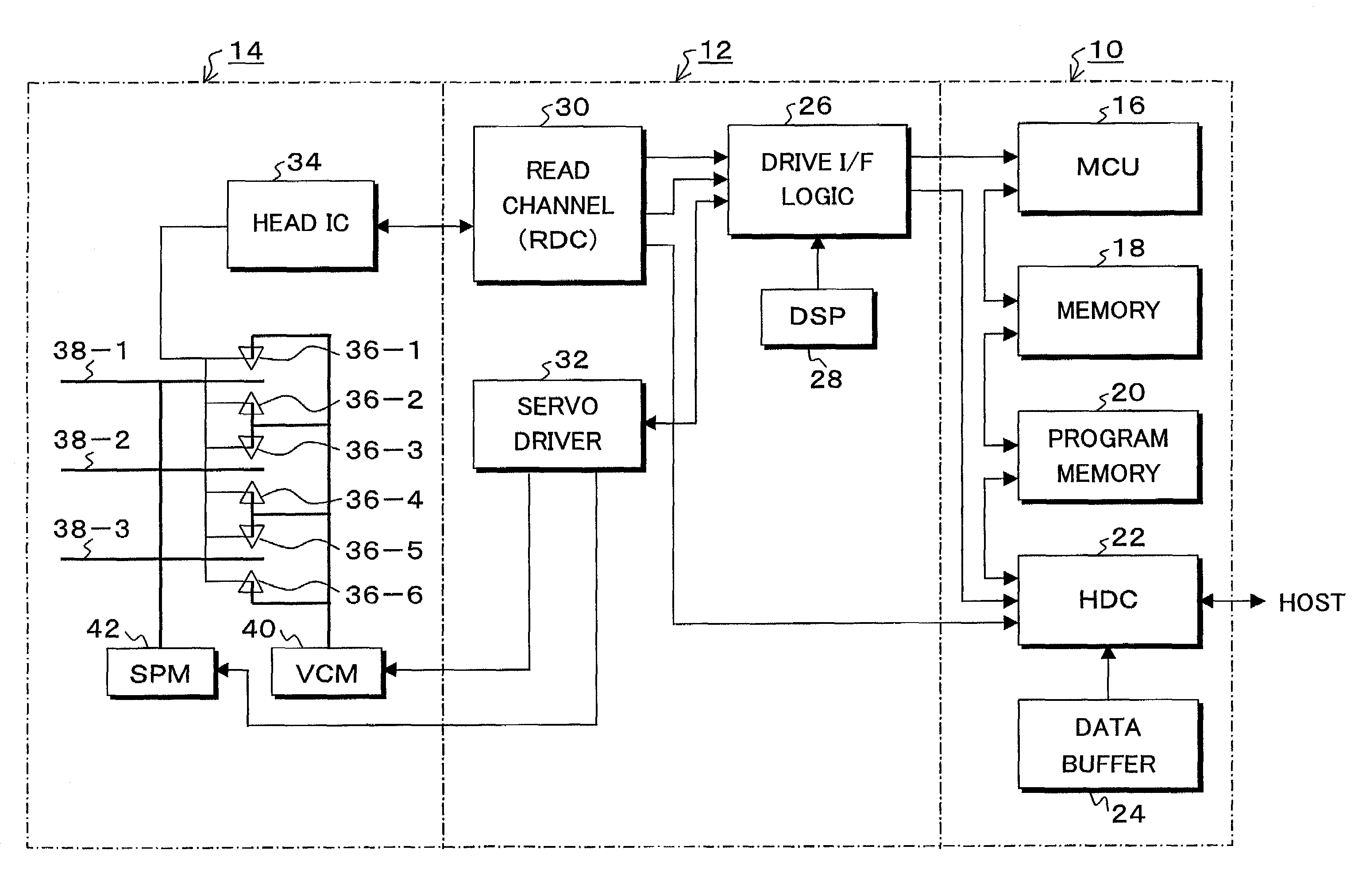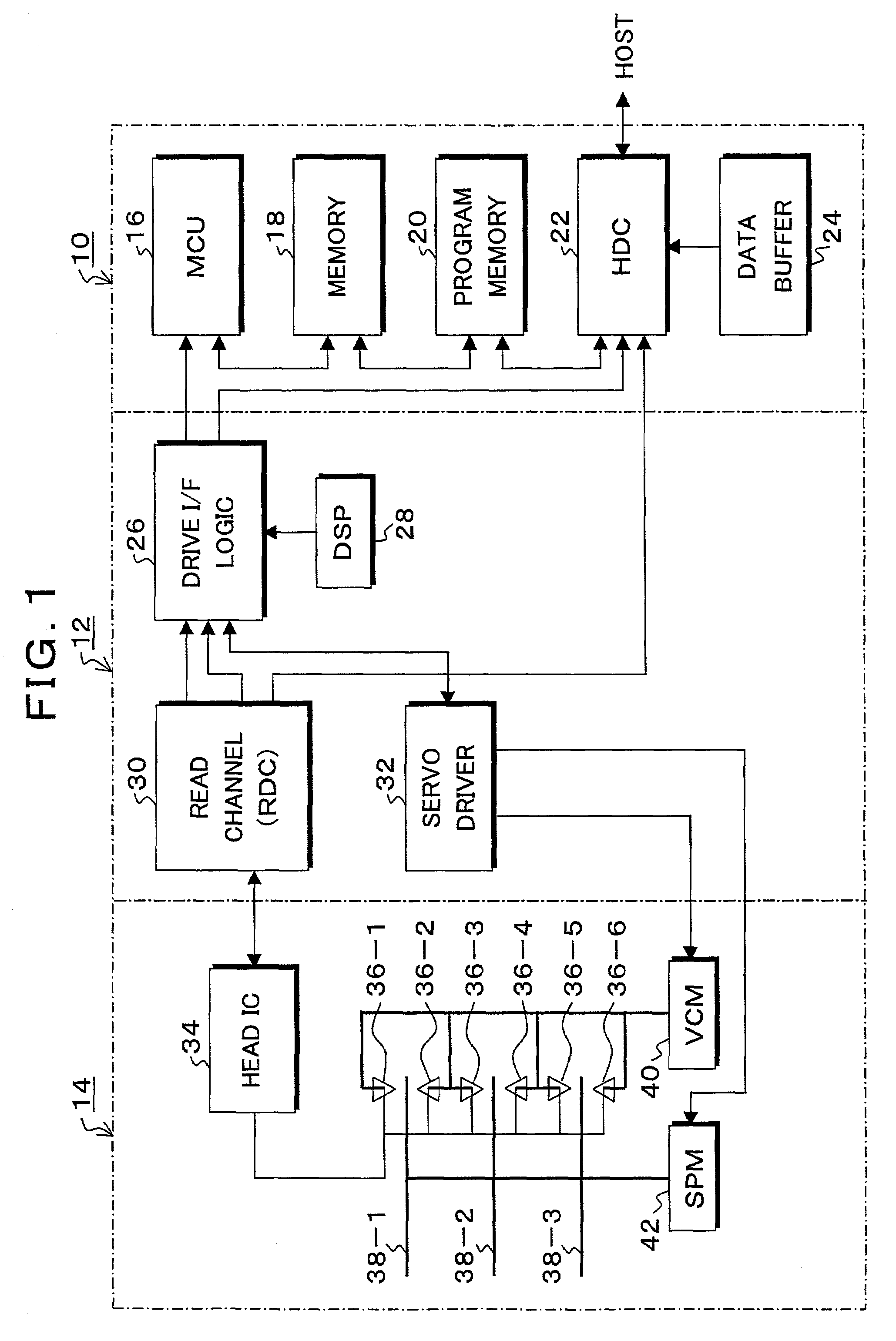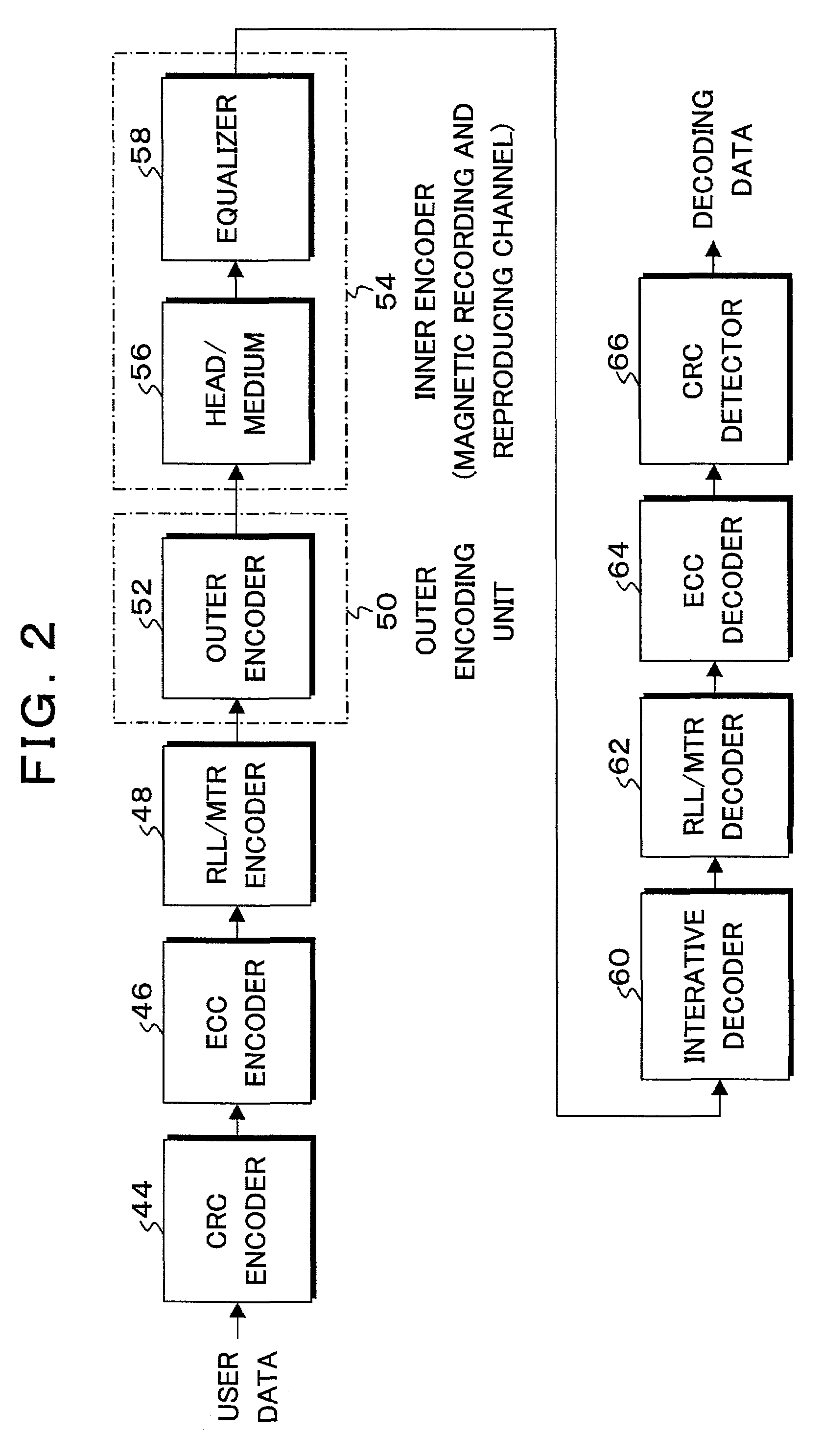Information recording and reproducing apparatus and method and signal decoding circuit having improved noise processing characteristics
a signal decoding circuit and information recording technology, applied in the field of information recording and reproducing apparatus and method of magnetic, can solve the problems of insufficient handling as a noise model, insufficient consideration of input signal pattern dependency of noise correlation, and inability to apply noise prediction schemes, etc., to achieve efficient application and improve decoding performance
- Summary
- Abstract
- Description
- Claims
- Application Information
AI Technical Summary
Benefits of technology
Problems solved by technology
Method used
Image
Examples
first embodiment
[0107]In the first embodiment, in order to raise a decoding precision, in the calculation of the channel information Λc(yk) in the equation (2), an NPMAP (Noise Predictive Maximum A posteriori Probability) decoding method which introduces a correlation for the past and future noises which depend on the recording patterns is executed.
[0108]Assuming that e(Smk) and σ(Sk) which are obtained by the equations (21) and (22) depend on the state Smk in FIG. 9 like a correlation and a standard deviation of the noises for the state of the signal on the medium shown in a table of FIG. 11, by using the table of FIG. 11 in the calculation of the channel information Λc(yk), the NPMAP decoding method of the recording signal depending type can be realized. Now, assuming that the input noises of the MAP decoder are based on the Markov chain having a correlation with the noises of the past L bits and future M bits, its probability density function is obtained by the following equation (23) for the eq...
third embodiment
[0122]The sliding window method will be specifically explained with reference to FIG. 16. First, in a first window 132-1, reliability information Λ1, . . . , and ΛNu for the series y1, . . . , and yNu are obtained from the equations (26) and (3) to (7). However, the training series yNu+1, . . . , and yNu+Nt are used in the calculation of βNu. In an ith wndow 132-i, βiNu is similarly calculated by using the training series yiNu+1, . . . , and yiNu+Nt and reliability information Λ(i−1)Nu+1, . . . , and ΛiNu are obtained. In a last (Nwind)th window 132-N, reliability information Λ(Nwind−1)Nu+1, . . . , and ΛN are obtained from the equations (26) and (3) to (7) by using series y(Nwind−1)Nu+1, . . . , and yN. Details in case of calculating the reliability information by using the sliding window method in the third embodiment are as shown in flowcharts of FIGS. 17A and 17B. That is, in step S1, the input series is divided into windows as small series. In step S2, the window number is set ...
fifth embodiment
[0126]Further, as shown in FIG. 20, in the fifth embodiment, the tables regarding the mean value d(Smk) of the equalized signal for the states which are used in the NPMAP decoding, the correlation e(Smk) of the noises, and the standard deviation σ(Smk) of the noises can be likewise reduced. Therefore, the memory capacity and the calculation amount which are necessary in the iterative decoder 60 can be reduced. In addition, the training for calculating the parameter in FIG. 20 can be also simplified.
PUM
| Property | Measurement | Unit |
|---|---|---|
| time | aaaaa | aaaaa |
| noise characteristics | aaaaa | aaaaa |
| Density | aaaaa | aaaaa |
Abstract
Description
Claims
Application Information
 Login to View More
Login to View More - R&D
- Intellectual Property
- Life Sciences
- Materials
- Tech Scout
- Unparalleled Data Quality
- Higher Quality Content
- 60% Fewer Hallucinations
Browse by: Latest US Patents, China's latest patents, Technical Efficacy Thesaurus, Application Domain, Technology Topic, Popular Technical Reports.
© 2025 PatSnap. All rights reserved.Legal|Privacy policy|Modern Slavery Act Transparency Statement|Sitemap|About US| Contact US: help@patsnap.com



